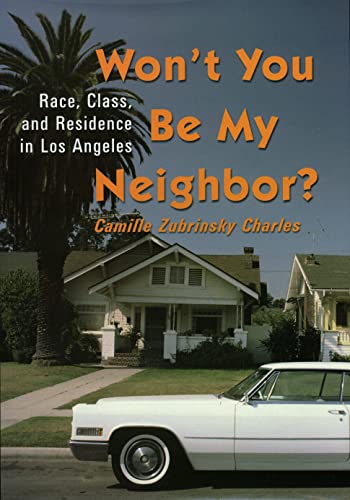Social Death: Racialized Rightlessness and the Criminalization of the Unprotected (Nation of Nations)




Los Angeles is a city of delicate racial and ethnic balance. As evidenced by the 1965 Watts violence, the 1992 Rodney King riots, and this year’s award-winning film Crash, the city’s myriad racial groups coexist uneasily together, often on the brink of confrontation. In fact, Los Angeles is highly segregated, with racial and ethnic groups clustered in homogeneous neighborhoods. These residential groupings have profound effects on the economic well-being and quality of life of residents, dictating which jobs they can access, which social networks they can tap in to, and which schools they attend. In Won’t You Be My Neighbor?, sociologist Camille Zubrinsky Charles explores how modern racial attitudes shape and are shaped by the places in which people live.
Using in-depth survey data and information from focus groups with members of L.A.’s largest racial and ethnic groups, Won’t You Be My Neighbor? explores why Los Angeles remains a segregated city. Charles finds that people of all backgrounds prefer both racial integration and a critical mass of same-race neighbors. When asked to reveal their preferred level of racial integration, people of all races show a clear and consistent order of preference, with whites considered the most highly desired neighbors and blacks the least desirable. This is even true among recent immigrants who have little experience with American race relations. Charles finds that these preferences, which are driven primarily by racial prejudice and minority-group fears of white hostility, taken together with financial considerations, strongly affect people’s decisions about where they live. Still, Charles offers reasons for optimism: over time and with increased exposure to other racial and ethnic groups, people show an increased willingness to live with neighbors of other races.
In a racially and ethnically diverse city, segregated neighborhoods can foster distrust, reinforce stereotypes, and agitate inter-group tensions. Won’t You Be My Neighbor? zeroes in on segregated neighborhoods to provide a compelling examination of the way contemporary racial attitudes shape, and are shaped by, the places where we live.
| Country | USA |
| Brand | Russell Sage Foundation |
| Manufacturer | Russell Sage Foundation |
| Binding | Paperback |
| ItemPartNumber | black & white tables, maps, figures |
| UnitCount | 1 |
| Format | Illustrated |
| EANs | 9780871540713 |
| ReleaseDate | 0000-00-00 |